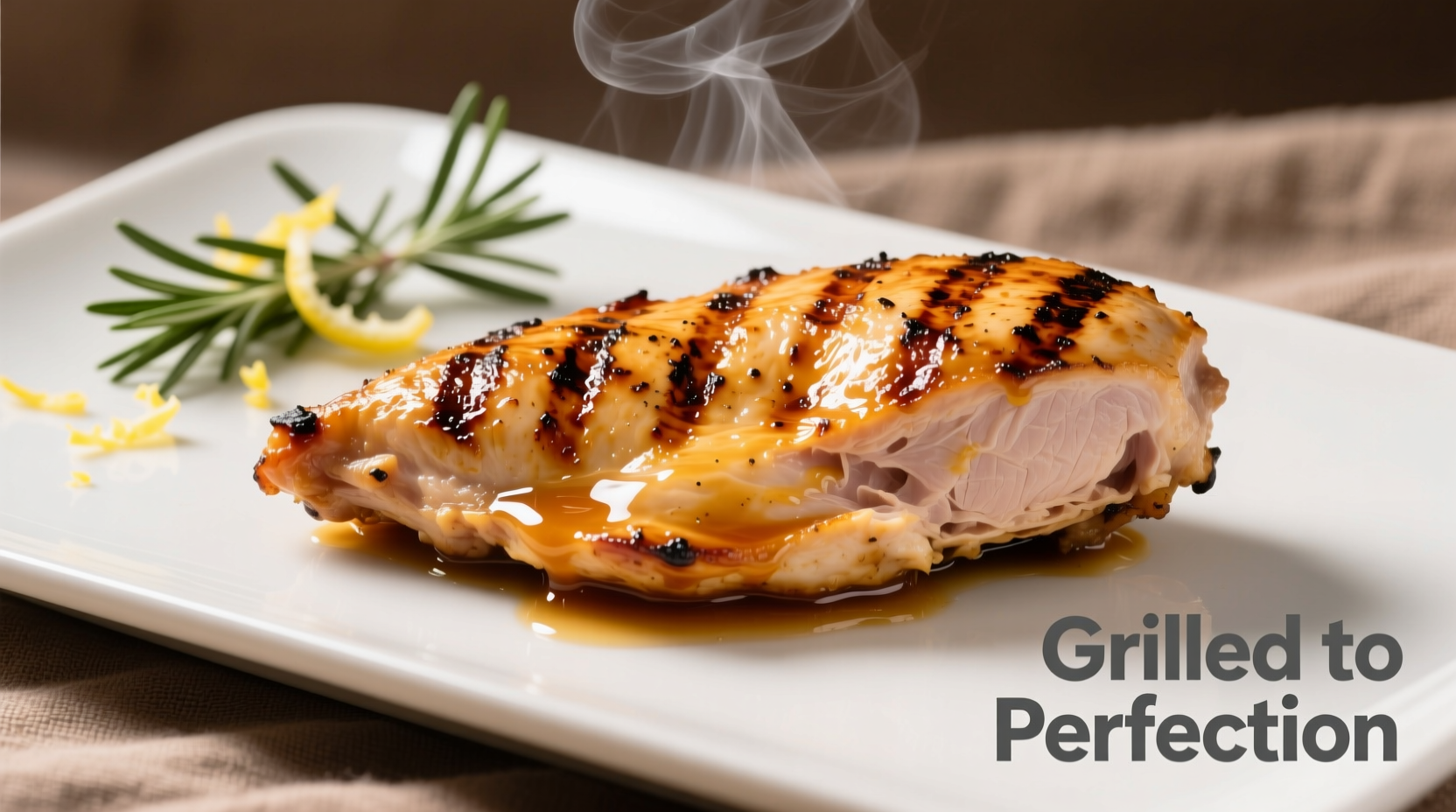The Complete Guide to Marinating and Cooking Chicken Perfectly Every Time
Nothing ruins a meal faster than dry, flavorless chicken. The secret to juicy, flavorful chicken isn't complicated—it's understanding the science behind marination and precise cooking techniques. Whether you're preparing a weeknight dinner or hosting guests, these professional methods will transform your chicken dishes from ordinary to extraordinary.
Why Proper Marination Matters
Marination isn't just about flavor—it's food science in action. Acidic components like lemon juice or vinegar break down muscle fibers, while oils carry fat-soluble flavors deep into the meat. The USDA's Food Safety and Inspection Service confirms that proper marination can improve both texture and safety when handled correctly.
Your Chicken Preparation Checklist
Before you begin, gather these essentials:
- Fresh chicken (never frozen unless properly thawed in refrigerator)
- Non-reactive container (glass, ceramic, or food-grade plastic)
- Meat thermometer (critical for food safety)
- Separate cutting boards for raw chicken and other ingredients
- Acid component (citrus, vinegar, yogurt)
- Oil base (olive, avocado, or neutral oil)
- Flavor enhancers (garlic, herbs, spices)
Marination Science: Acid vs. Dairy Approaches
Understanding marinade chemistry prevents common mistakes like mushy or tough chicken. This comparison shows key differences:
| Acid-Based Marinades | Dairy-Based Marinades |
|---|---|
| Components: Citrus, vinegar, wine | Components: Buttermilk, yogurt, kefir |
| Max time: 2 hours for breasts, 12 hours for thighs | Max time: 24-48 hours |
| Effect: Breaks down proteins quickly | Effect: Enzymes tenderize gently |
| Risk: Over-marinating causes mushiness | Risk: Minimal texture damage |
| Best for: Quick preparations, Mediterranean flavors | Best for: Southern fried chicken, Indian tikka |
Step-by-Step Marination Process
Follow these precise steps for optimal flavor penetration:
- Prepare your marinade: Use the 1:4 ratio—1 part acid to 4 parts oil. For every pound of chicken, combine 1/4 cup acid (lemon juice, vinegar), 1 cup oil, and flavorings.
- Score the chicken: Make shallow cuts (1/4 inch deep) in thicker areas to allow marinade penetration.
- Combine ingredients: Place chicken and marinade in container, ensuring even coverage. Remove excess air from plastic bags.
- Refrigerate properly: Always marinate in refrigerator, never at room temperature. Place container on bottom shelf to prevent cross-contamination.
- Time guidelines: Follow USDA food safety recommendations—boneless breasts (30 min-2 hrs), bone-in pieces (2-12 hrs), whole chicken (4-24 hrs).

Cooking Methods Compared
Different cooking techniques yield distinct results. Choose based on your desired outcome:
- Grilling: High heat (400-450°F), 6-8 minutes per side. Best for boneless cuts. Flip only once to maintain juiciness.
- Baking: 375-400°F for 20-25 minutes. Place chicken on wire rack over baking sheet for even air circulation.
- Pan-searing: Medium-high heat with minimal oil. Sear 5-6 minutes per side, finish in 350°F oven if thick.
- Broiling: 6 inches from heat source, 5-7 minutes per side. Watch carefully to prevent burning.
Food Safety Essentials You Must Know
The USDA Food Safety and Inspection Service mandates these critical practices:
- Cook all poultry to 165°F internal temperature measured in thickest part
- Never reuse marinade that contacted raw chicken unless boiled for 2+ minutes
- Discard marinade within 2 hours of removing chicken
- Use separate utensils for raw and cooked chicken
- Refrigerate leftovers within 2 hours of cooking
Troubleshooting Common Problems
Solve these frequent issues with professional solutions:
- Dry chicken: You're overcooking. Remove at 160°F—temperature rises 5 degrees during resting.
- Bland flavor: Increase salt in marinade (1 tsp per pound) and extend marination time within safe limits.
- Burnt exterior: Reduce heat and cook longer. Pat chicken dry before cooking for better browning.
- Mushy texture: Over-marinated with acid. Stick to recommended timeframes or switch to dairy-based marinades.
Pro Tips for Restaurant-Quality Results
Professional chefs use these techniques you can implement at home:
- Brine before marinating for extra moisture retention (1 hour in 4 cups water + 1/4 cup salt)
- Add 1 tbsp honey or sugar to marinade for better caramelization
- Let chicken sit at room temperature 20 minutes before cooking for even heat distribution
- Rest cooked chicken 5-10 minutes before slicing to retain juices
- Use meat thermometer in multiple spots for accurate temperature reading
Frequently Asked Questions
Can I marinate chicken for 24 hours?
Bone-in chicken pieces and whole chickens can safely marinate for up to 24 hours in dairy-based marinades. Acid-based marinades should not exceed 12 hours for bone-in pieces or 2 hours for boneless breasts to prevent texture damage.
What's the best oil for chicken marinade?
Extra virgin olive oil works well for Mediterranean flavors but has a low smoke point. Avocado oil is ideal for high-heat cooking with neutral flavor. Sesame oil adds distinctive flavor but should be used in combination with neutral oils (no more than 25% of total oil).
How do I know when chicken is fully cooked without a thermometer?
While a thermometer is essential for food safety, visual cues include clear juices when pierced, firm texture that springs back when pressed, and no pink color in the thickest part. However, USDA recommends always using a thermometer as visual methods can be unreliable.
Can I use the same marinade for basting?
Only if you've reserved a portion before adding raw chicken. Marinade that contacted raw chicken must be boiled vigorously for at least 2 minutes to kill bacteria before using as basting sauce.
Why does my marinated chicken stick to the grill?
Chicken sticks when the grill isn't hot enough or when you try to flip too soon. Preheat grill to 400-450°F, oil the grates thoroughly, and wait until chicken releases naturally before flipping—usually 4-5 minutes.











 浙公网安备
33010002000092号
浙公网安备
33010002000092号 浙B2-20120091-4
浙B2-20120091-4